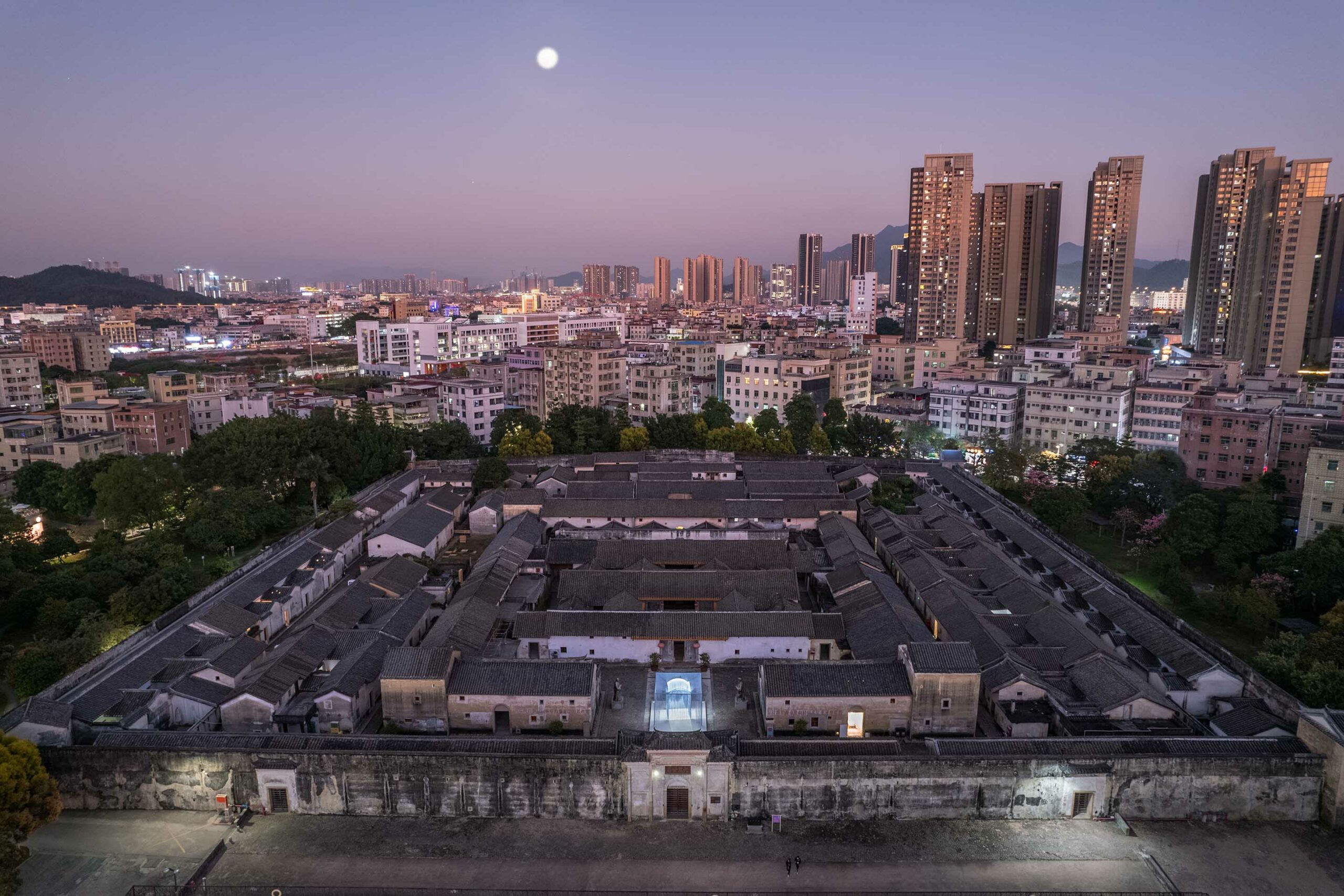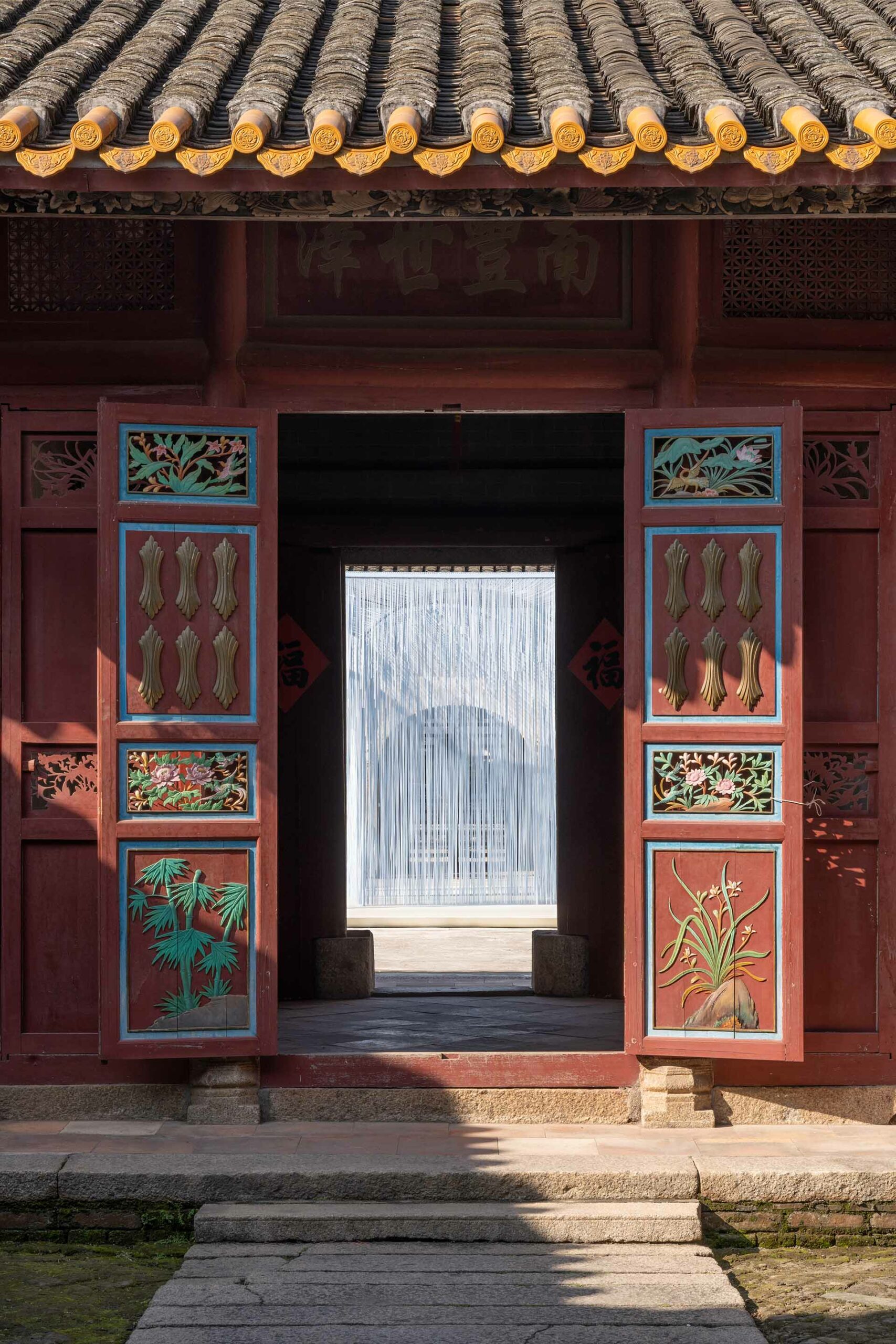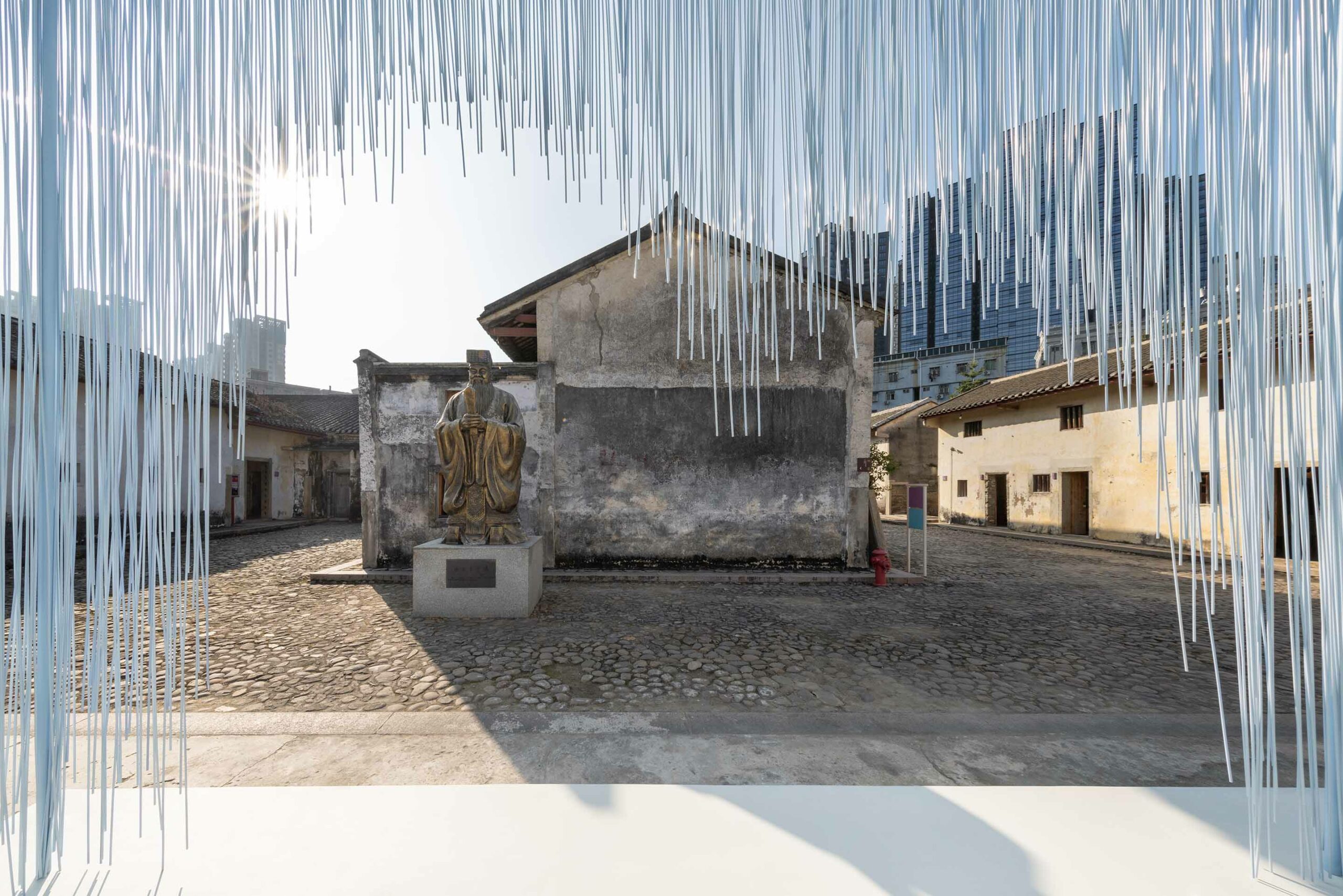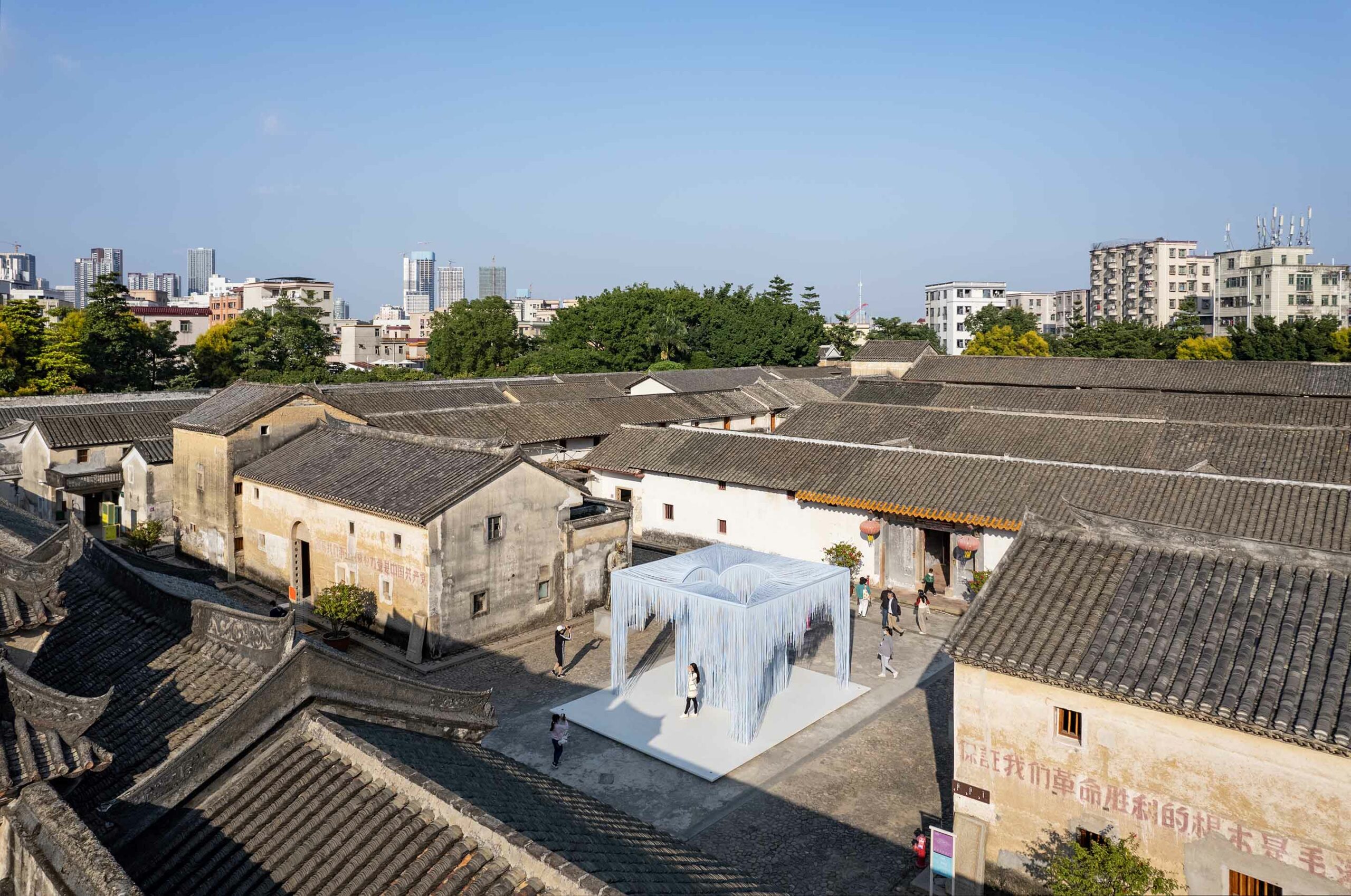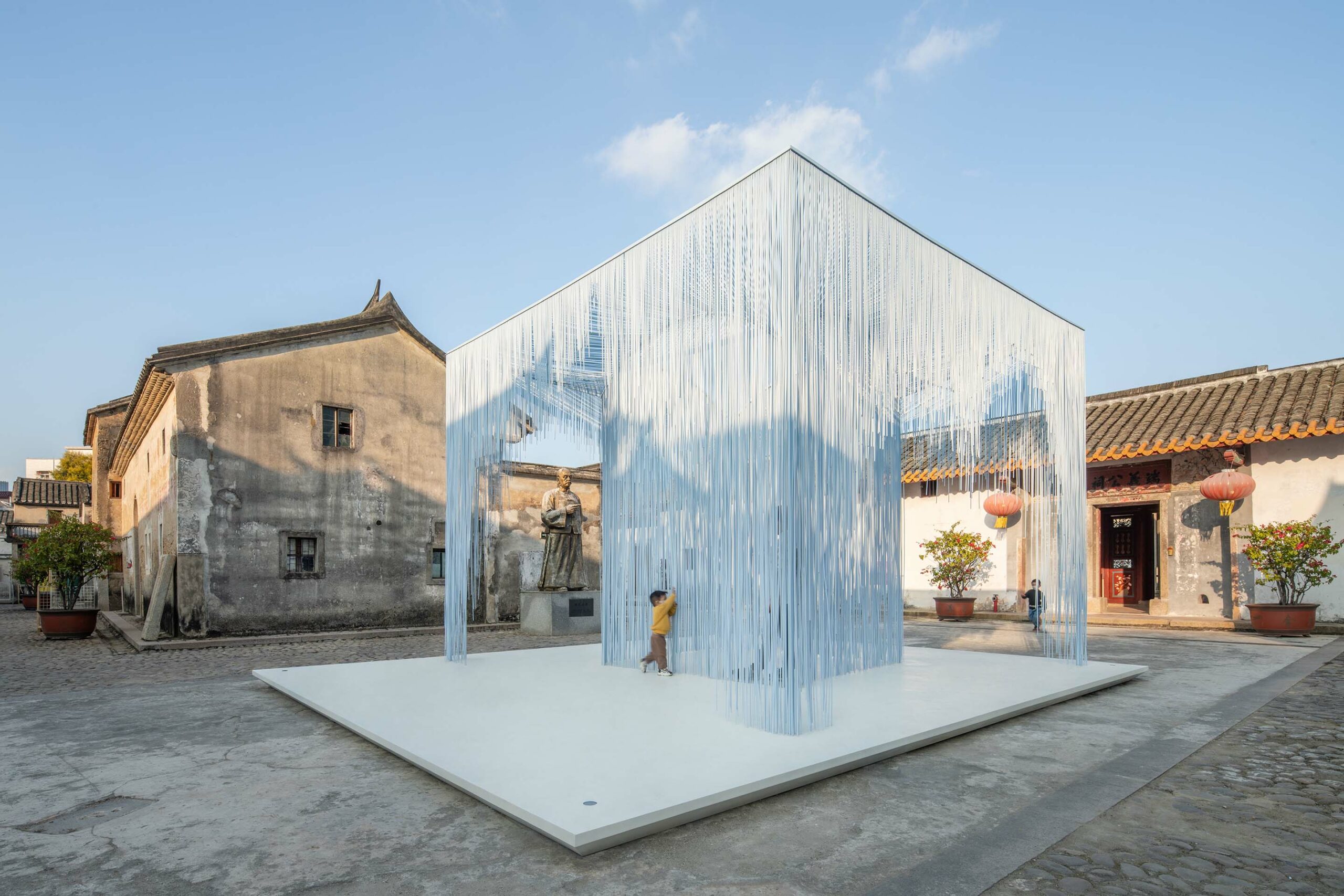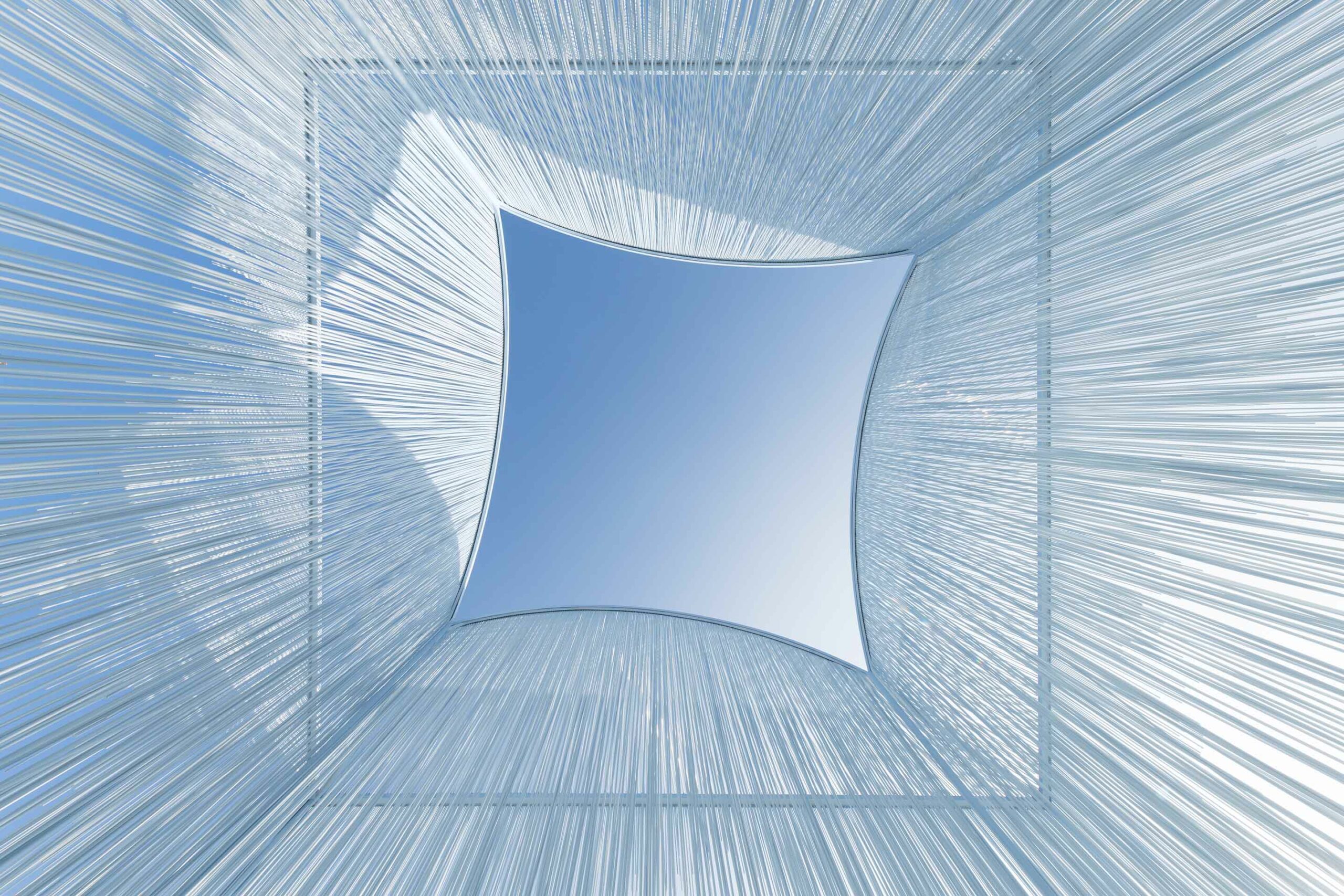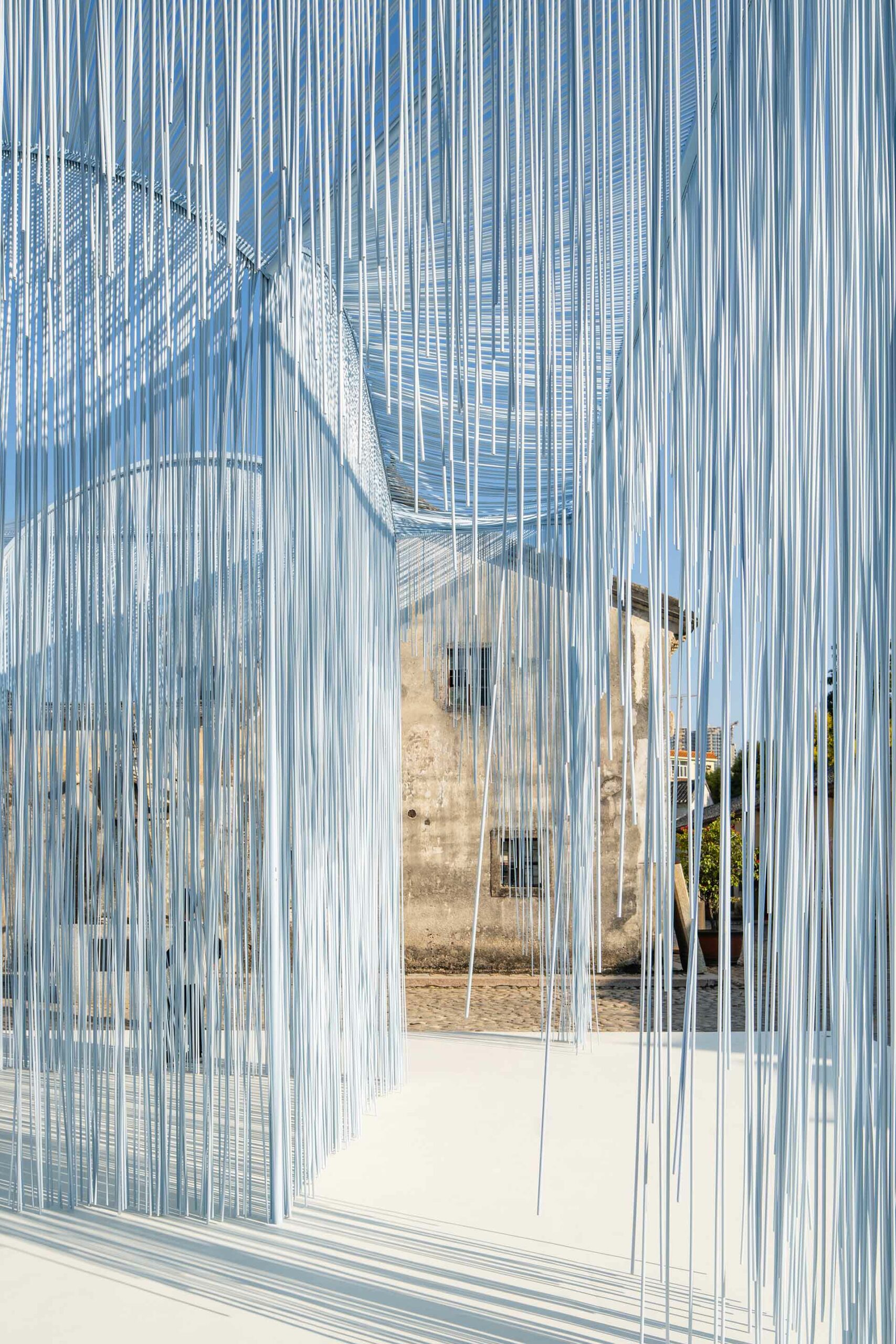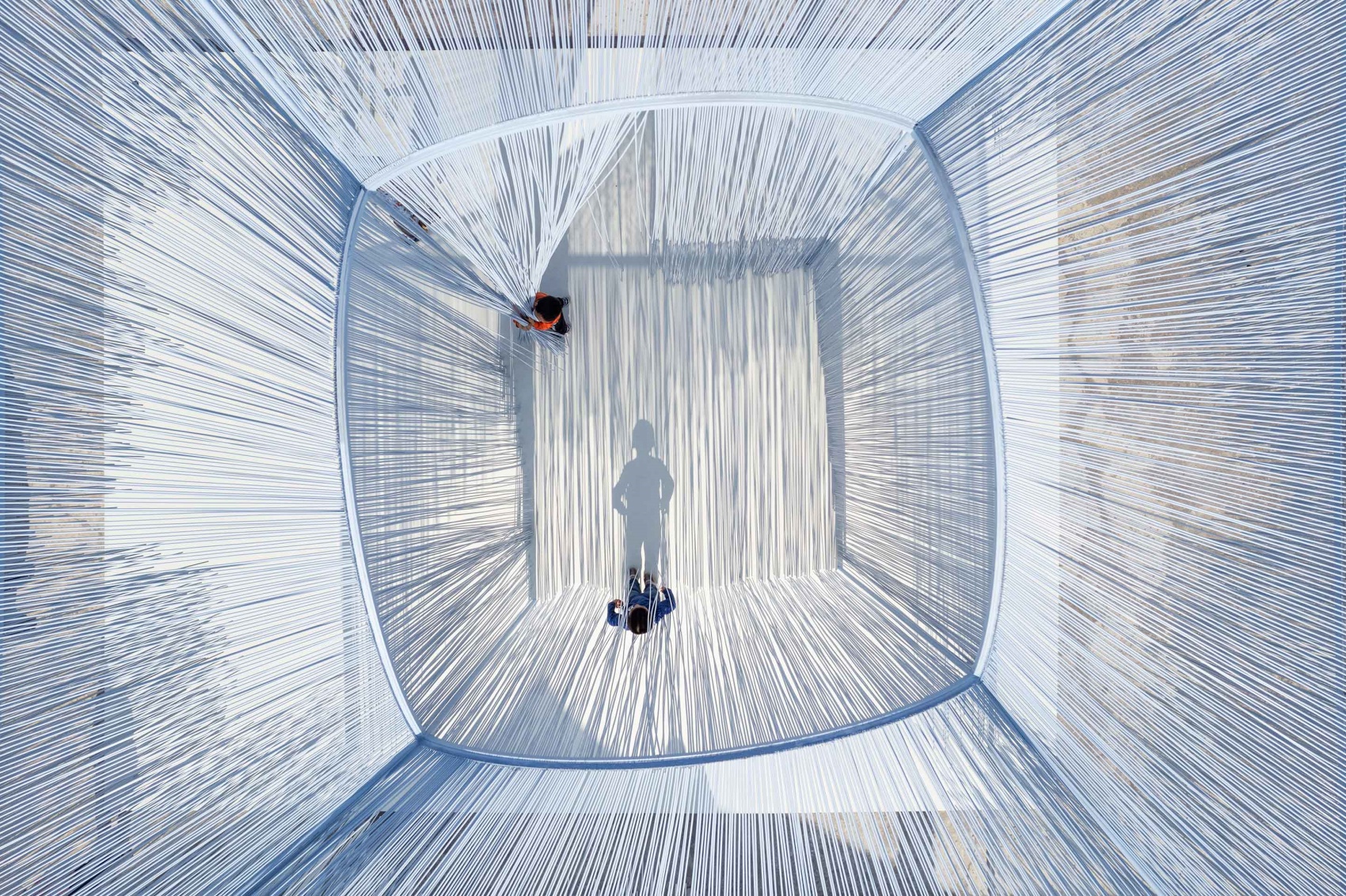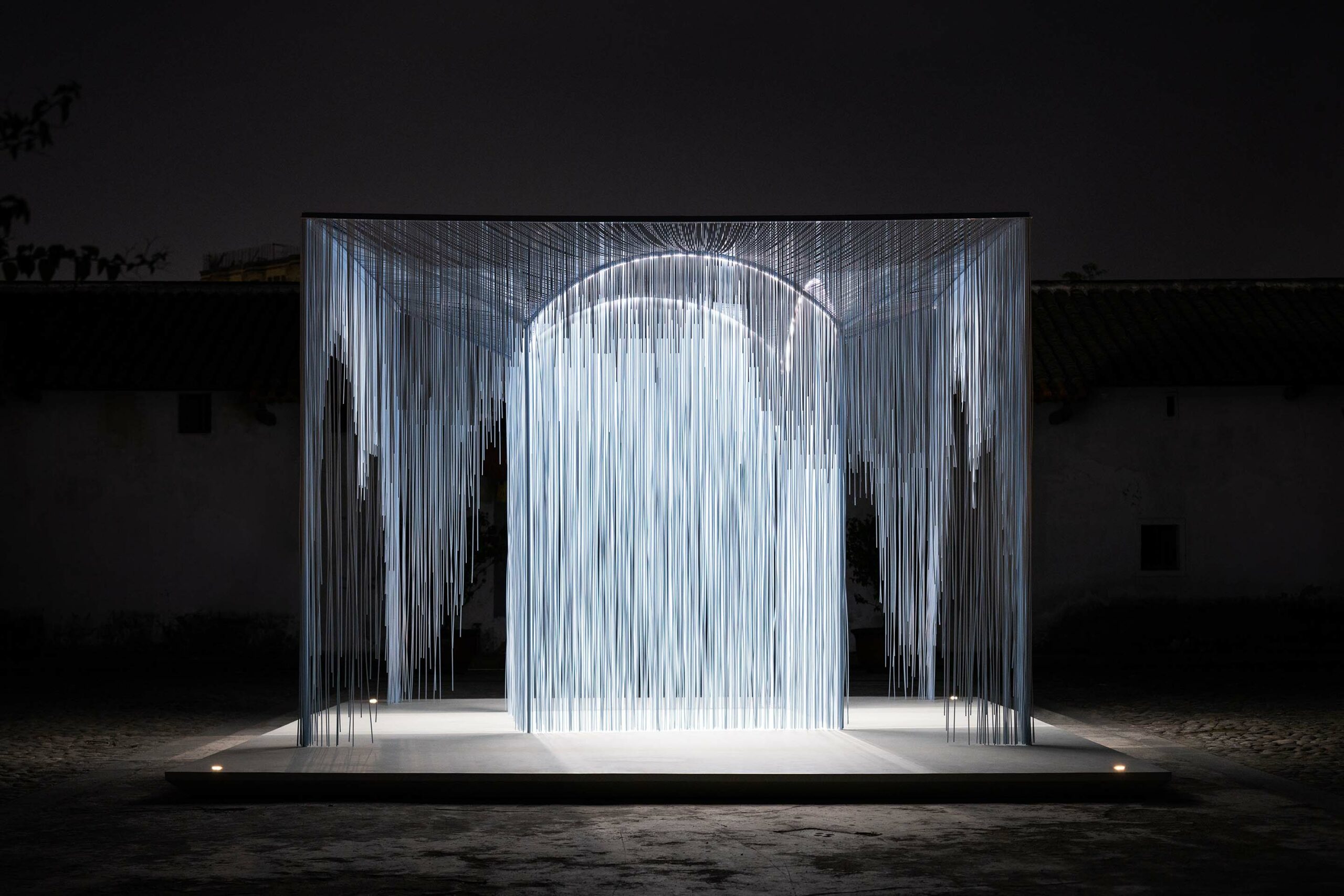To celebrate an ancient tradition, architects from Hung And Songkittipakdee (HAS) have set up a glowing pavilion in the middle of the historic village. The installation is intended to refer to the symbolic tree of the Hakka people who inhabited this fenced-off village. Today, the site is a monument tucked away amidst a modern district of the city of Shenzen, China.
The very subject of a walled-off village in a modern metropolis is a topic worth writing a book about. Unfortunately, the erasure of the Hakka culture by China’s larger ethnic groups makes it difficult to find information about the settlement. What is known is that the Hakka people have been building fortified villages in southeastern China since the beginning of the Empire. The Hakka speak their own dialect, have their own cuisine and architecture.
The village was probably established in 1791 and is one of the largest settlements of its kind in China. The lavish residence of the Hakka chief of the Zeng family was also built along with the village. The houses in the village are interconnected and multi-family. The focal point of the settlement is the square, which used to be a meeting place and trading area. It was here that life was bustling and residents met to talk, buy and sell. It was where women sold and spun silk. This fabric is one of the most important elements of Hakka culture, but also of Chinese culture.
Studio HAS decided to restore the square to its former function, albeit in a symbolic way. The Freeing FrameYard pavilion is to be a meeting place for tourists visiting the village. Silk is no longer sold here, but the thread-like tubes will symbolise this tradition. In total, more than 5,000 tubes have been attached to the metal frame, creating an amazing compilation.
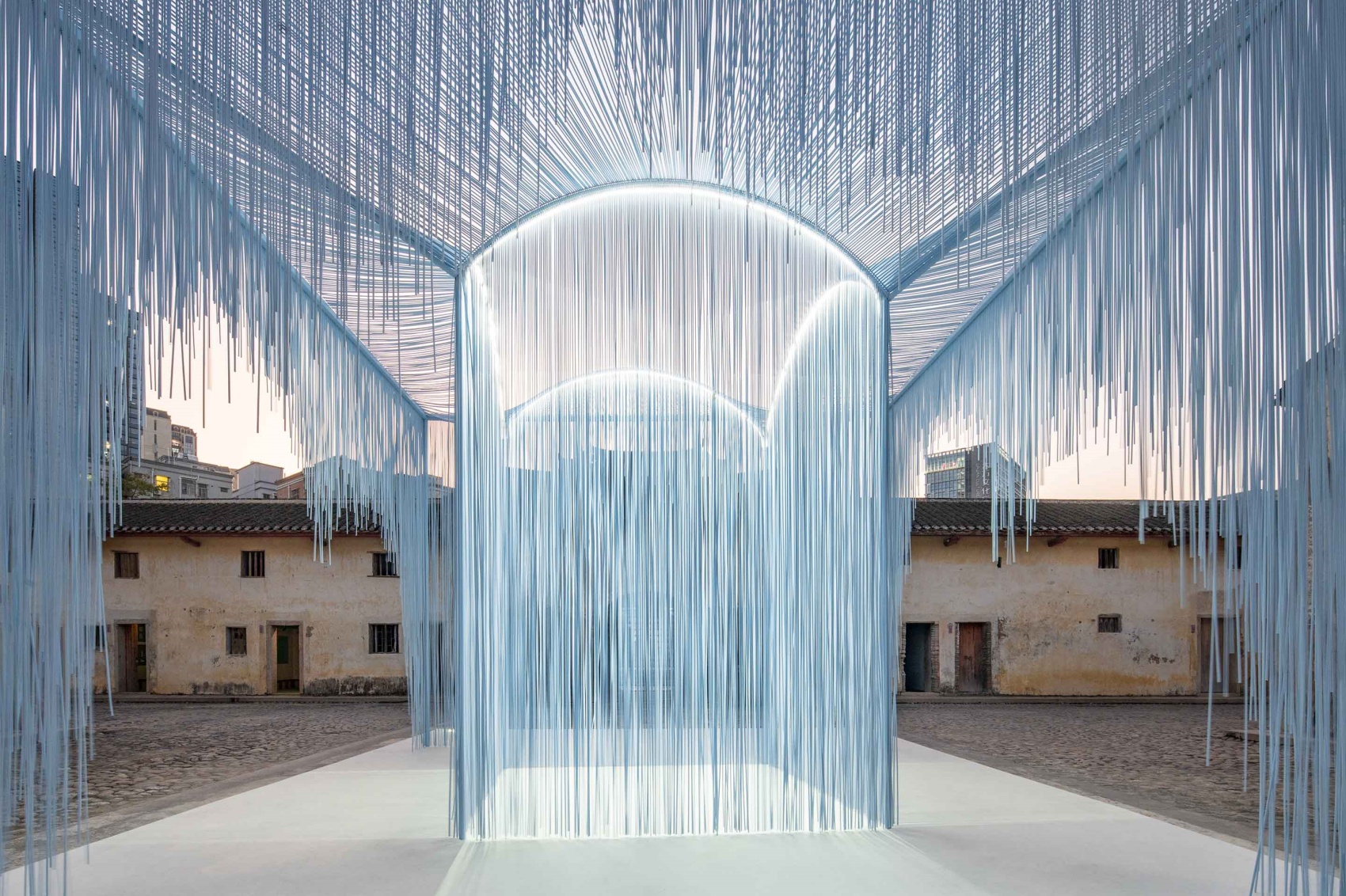
For Hakka, it is also intended as a visual reference to the banana tree. The plant is a symbol of prosperity and is characterised by its tubular branches falling to the ground. In addition to symbolism, the installation also has a functional use for the Hakka people. The luminous pavilion will serve as part of the scenery during the Hakka New Year celebrations. The installation can be narrowed or widened to suit current needs.
The thread-like tubes illuminate the night in a village plunged into darkness. They do so in a way that is aesthetically pleasing and adds to the charm of the grey residential buildings. Near the pavilion is a statue of the Confucian master Zengzi. The architects wanted the square to also become a place of worship and reflection.
The village is tucked away inside the new Pingshan district in Shenzen. On the map, it appears as a relic of the past, a forgotten monument to a forgotten culture, cut off from the modern fabric. The pavilion from the HAS studio aims to restore the memory of this place.
Source: HAS Design and Research
Photos: Yu Bai
Read also: Architecture | Curiosities | China | Monument | Places, Squares, Parks | whiteMAD on Instagram

